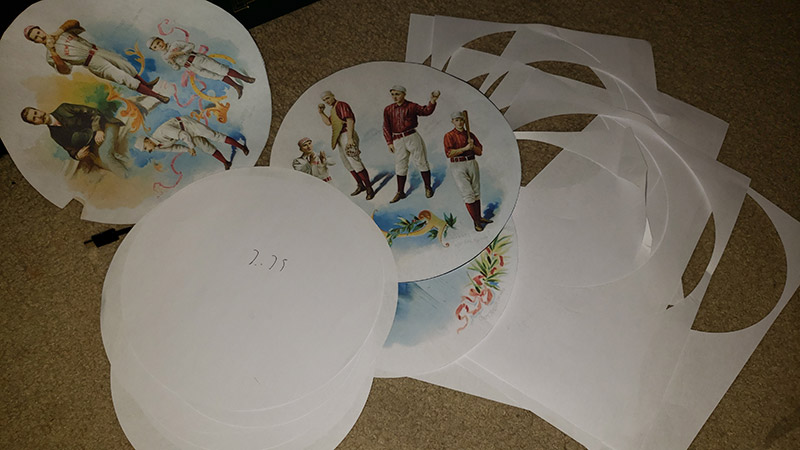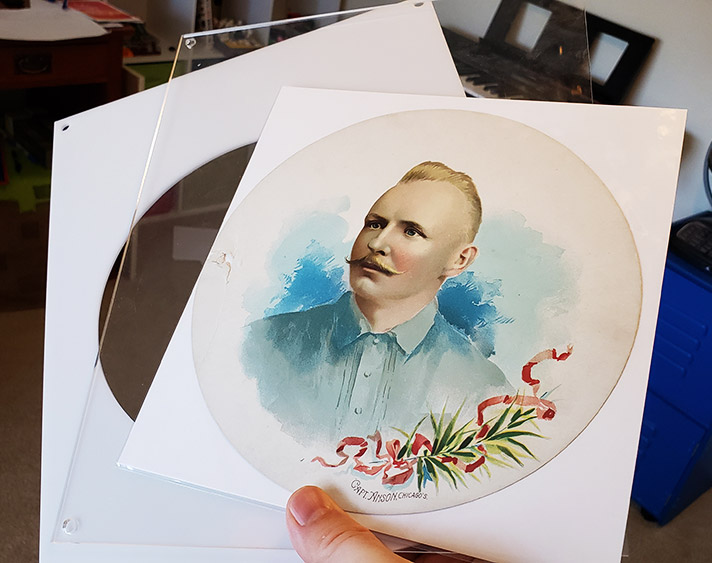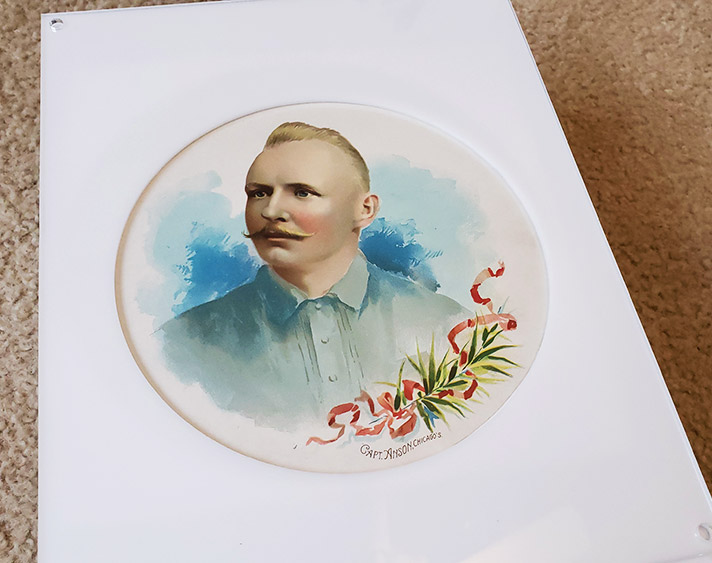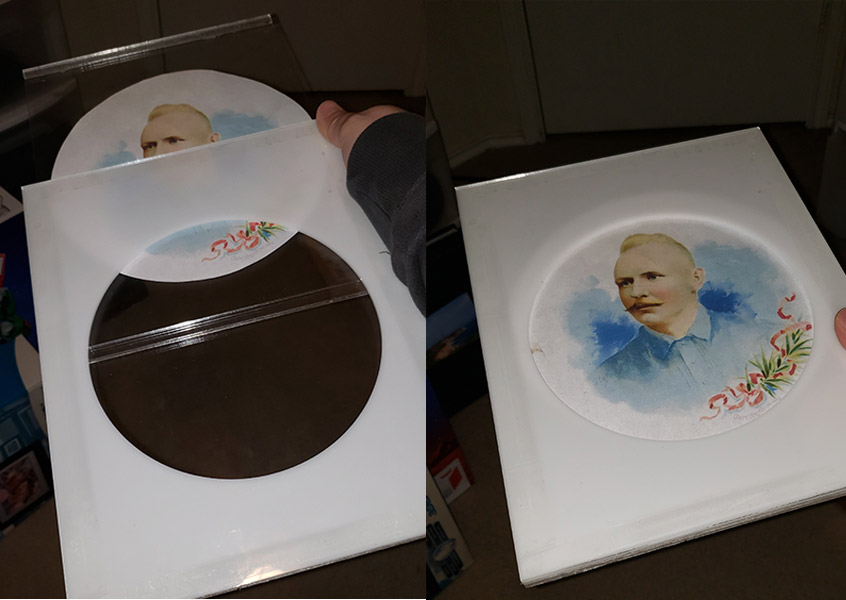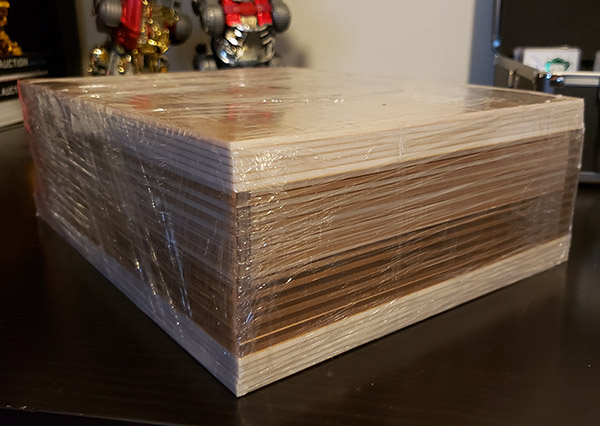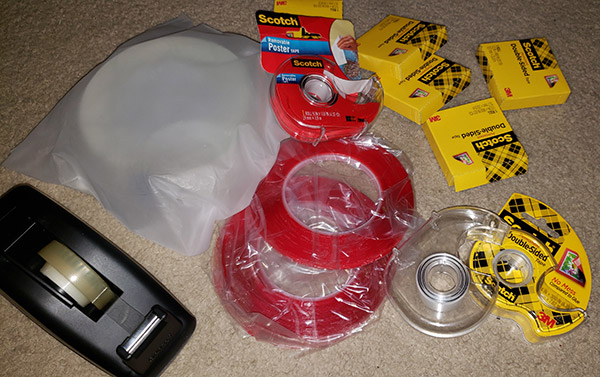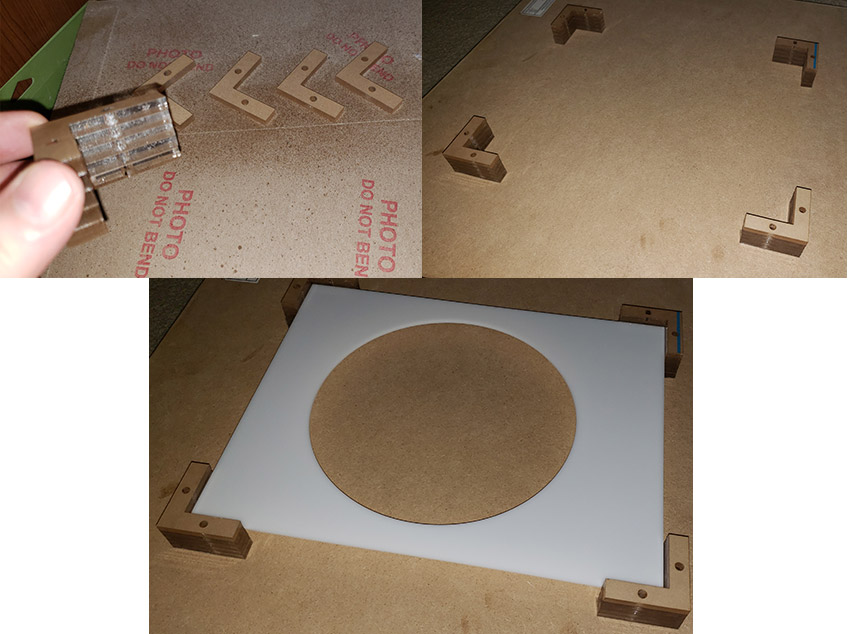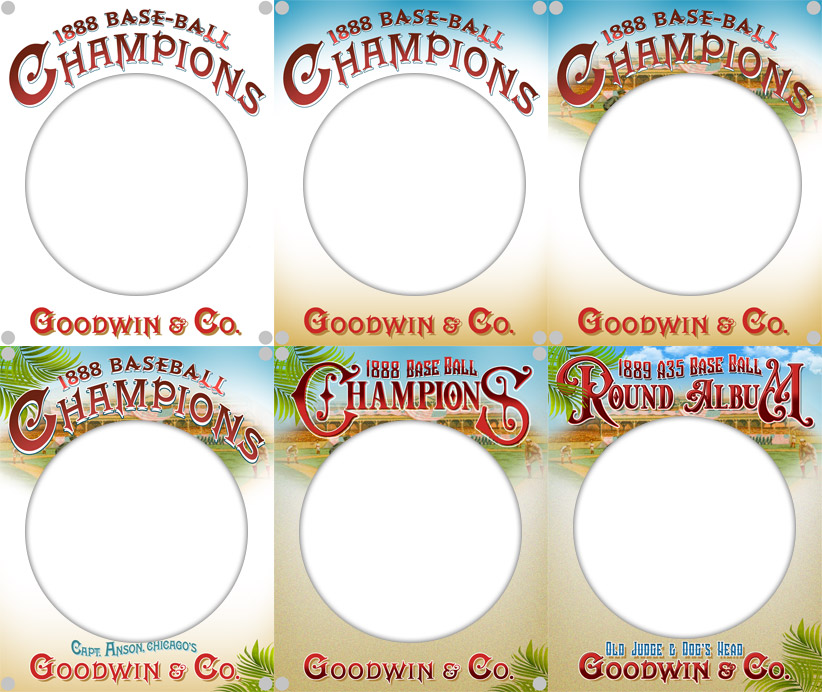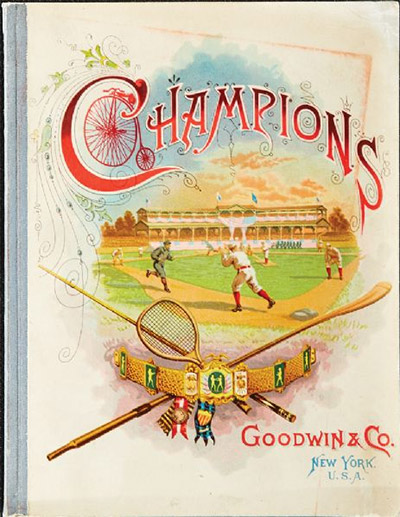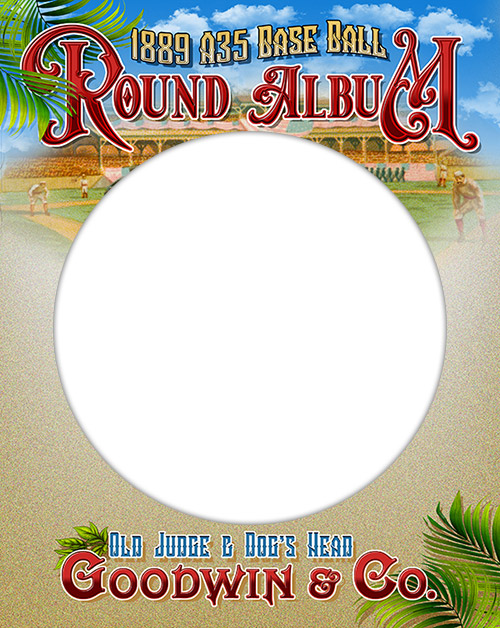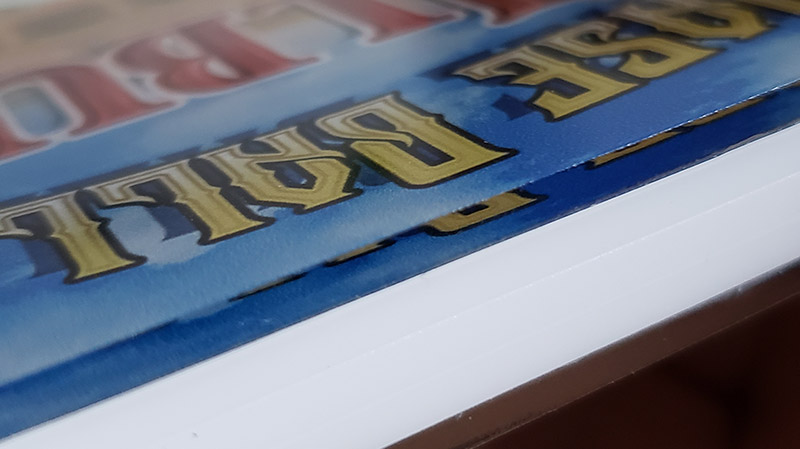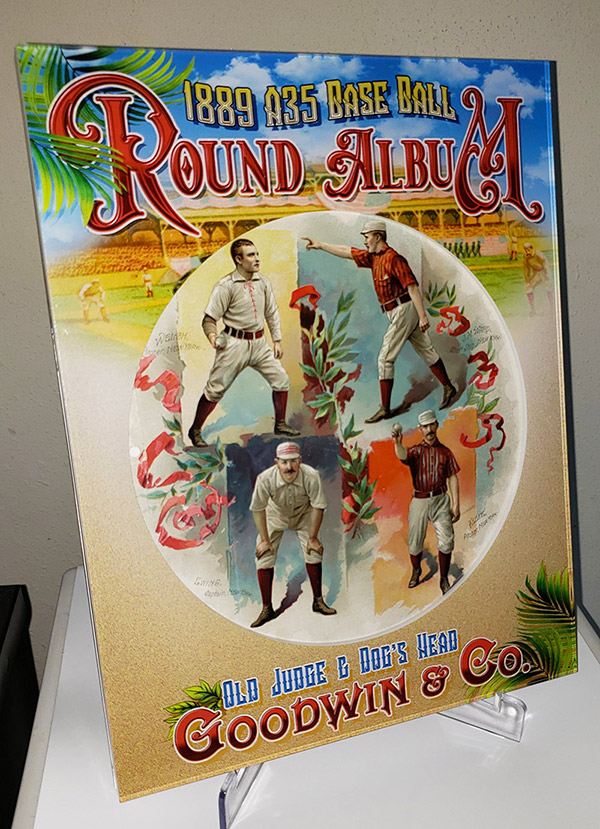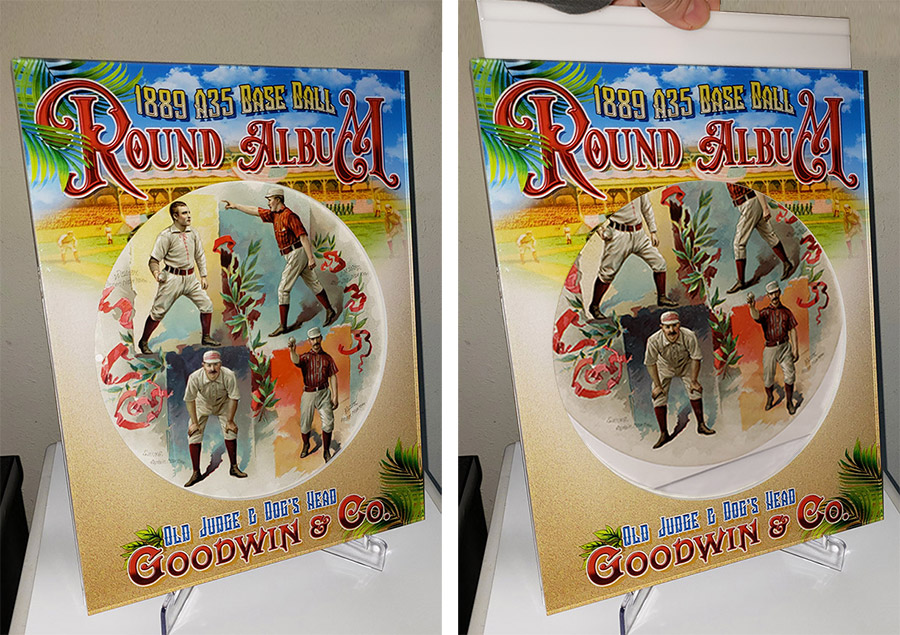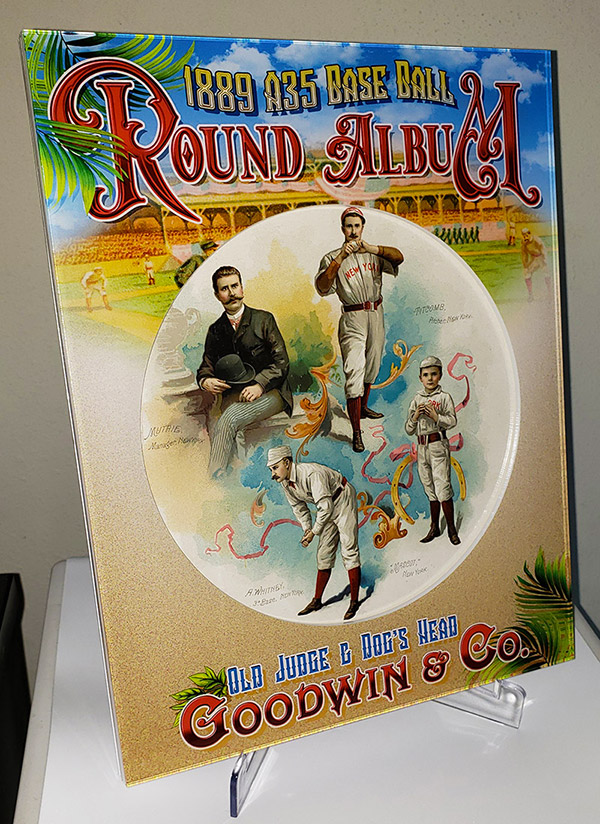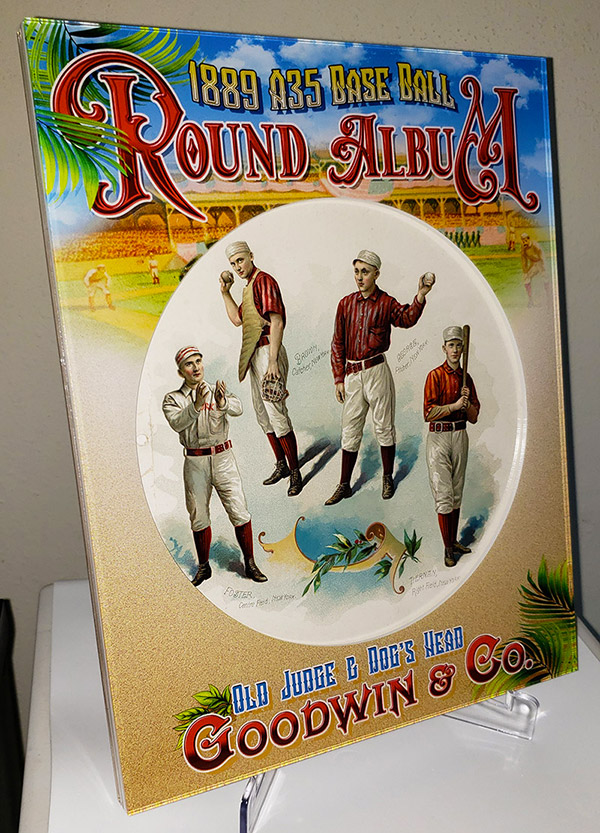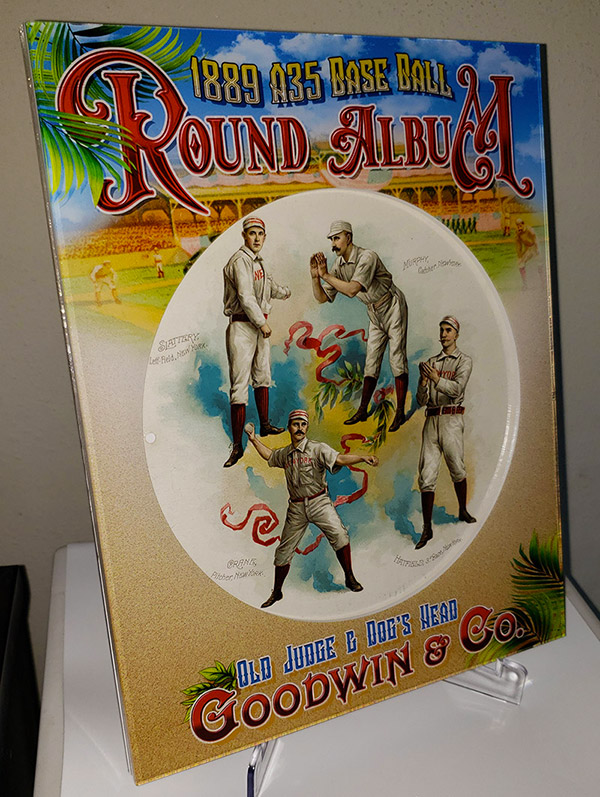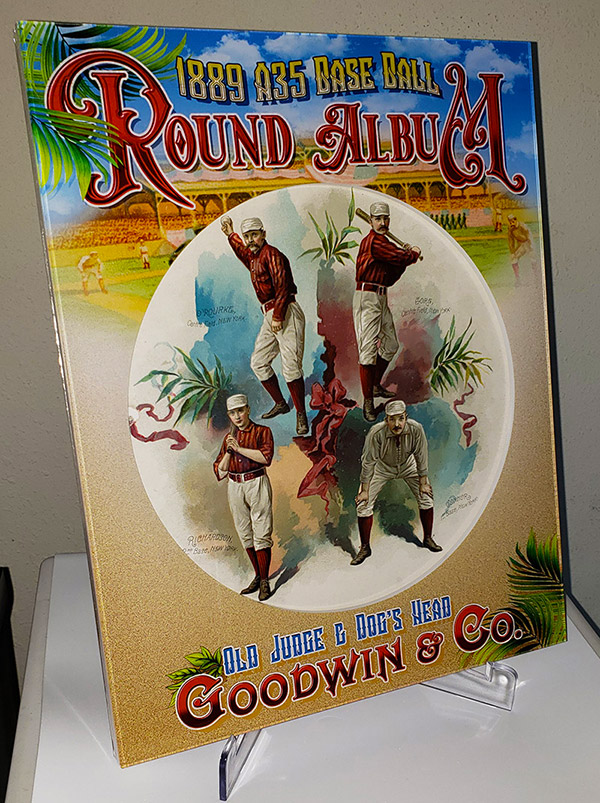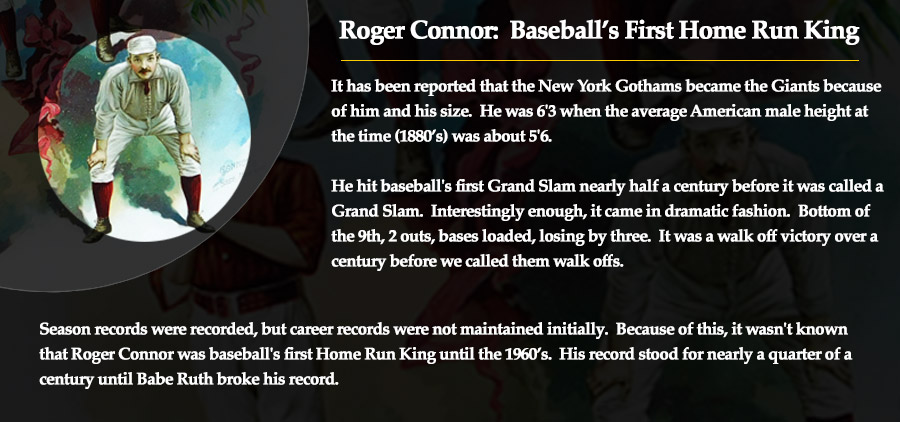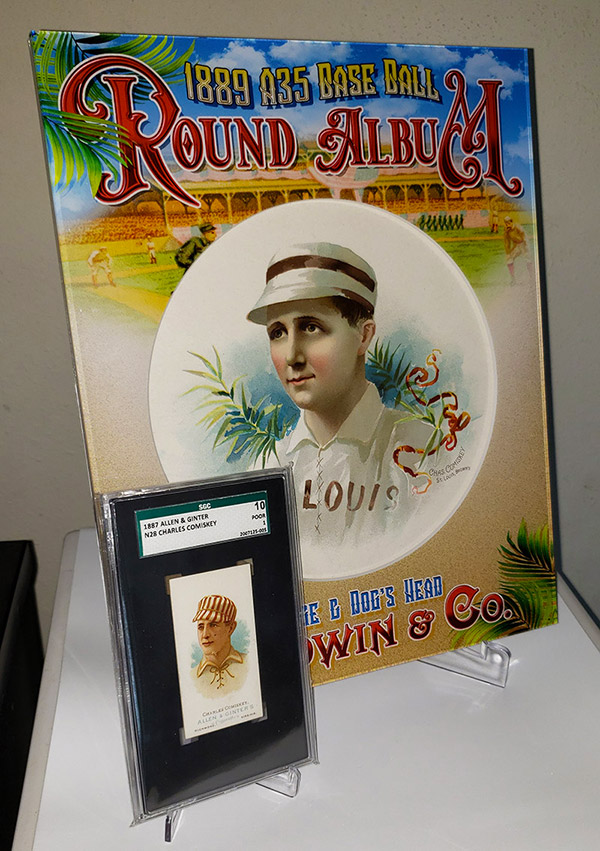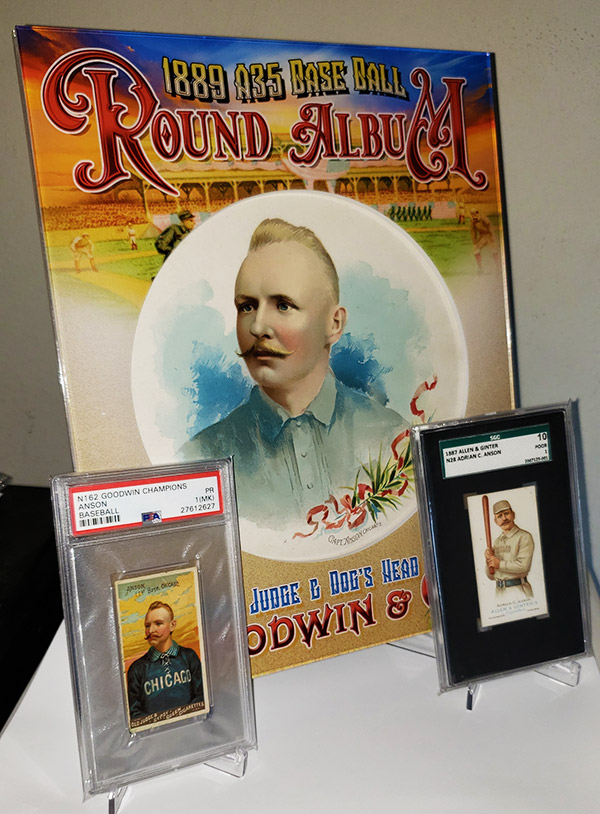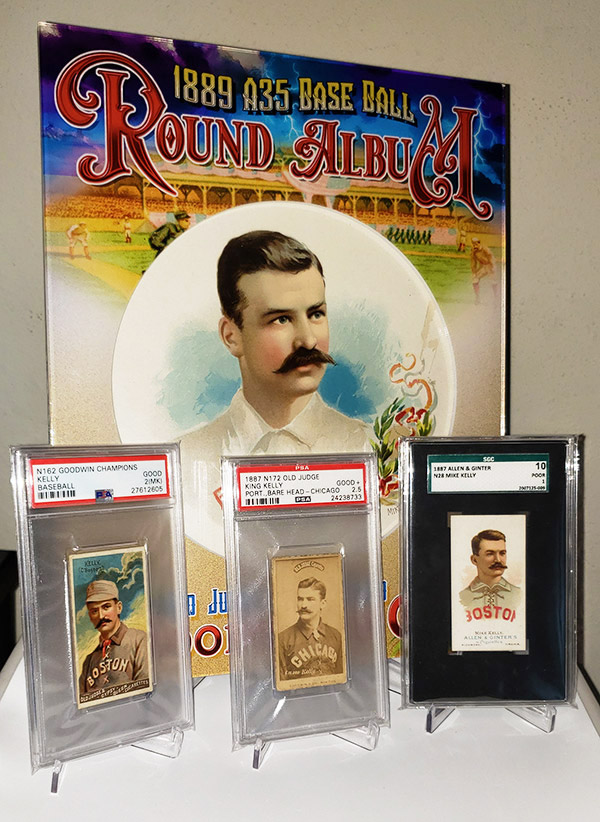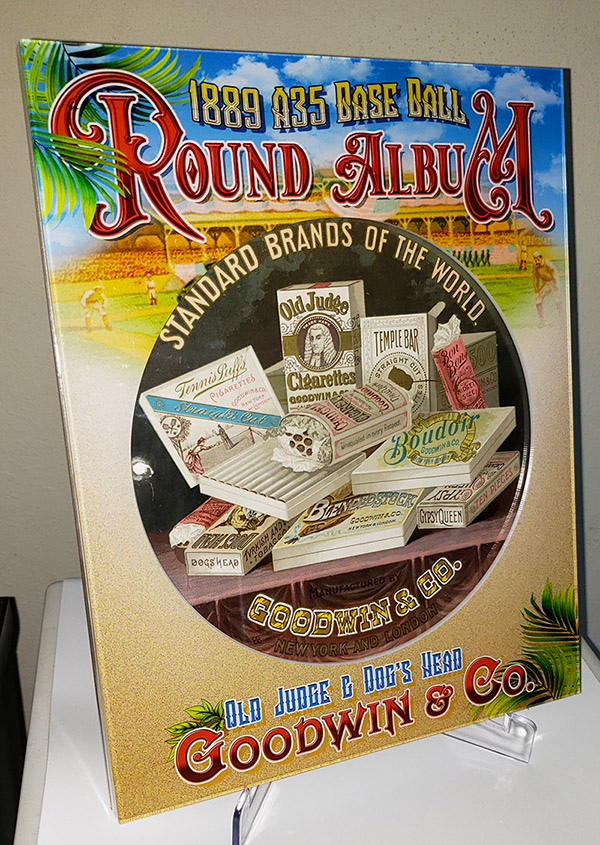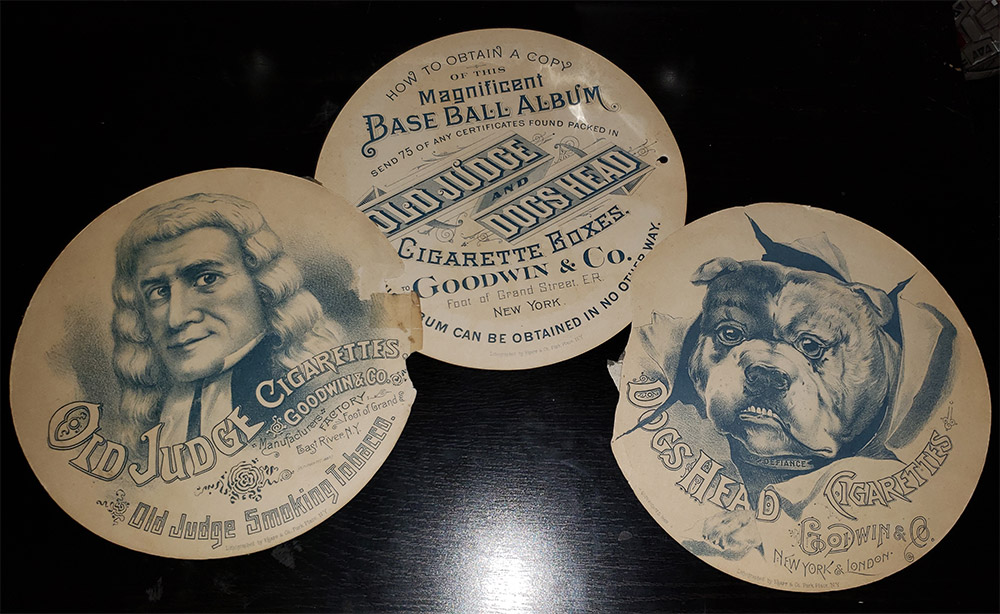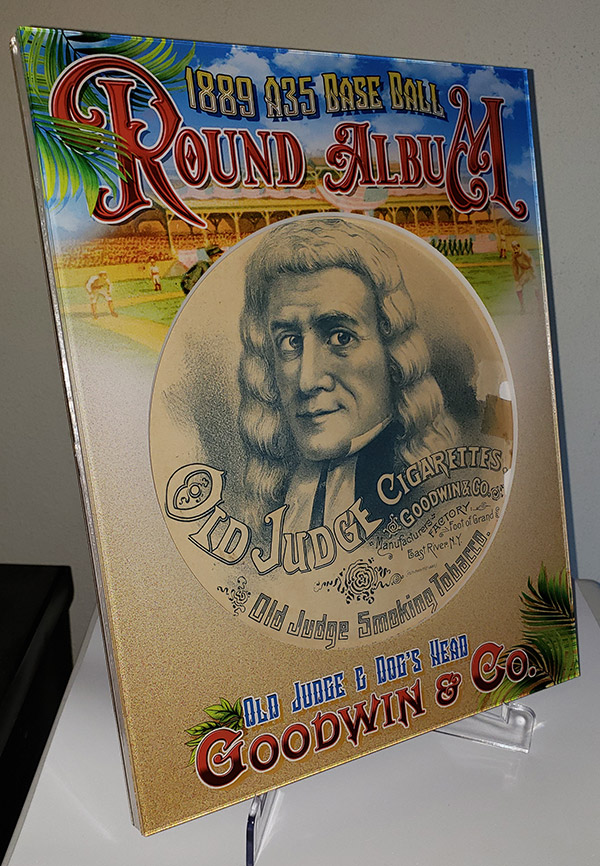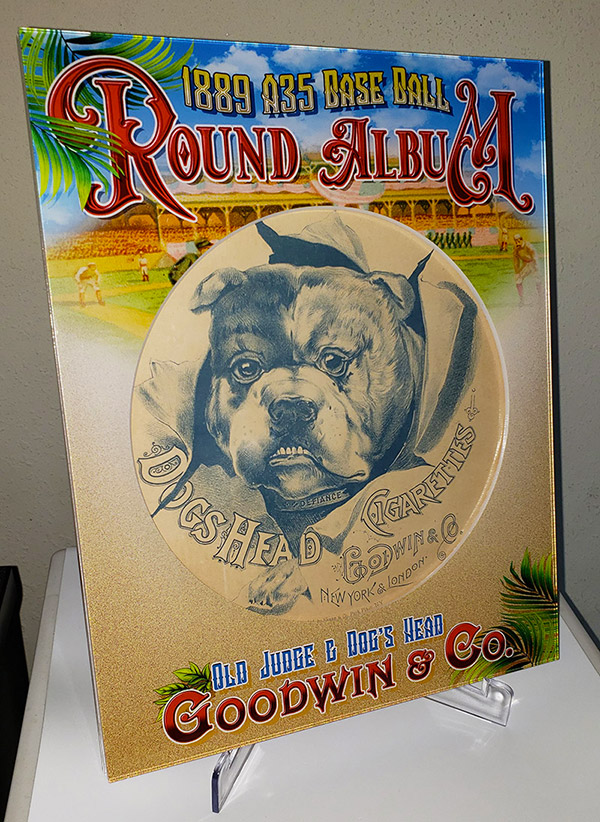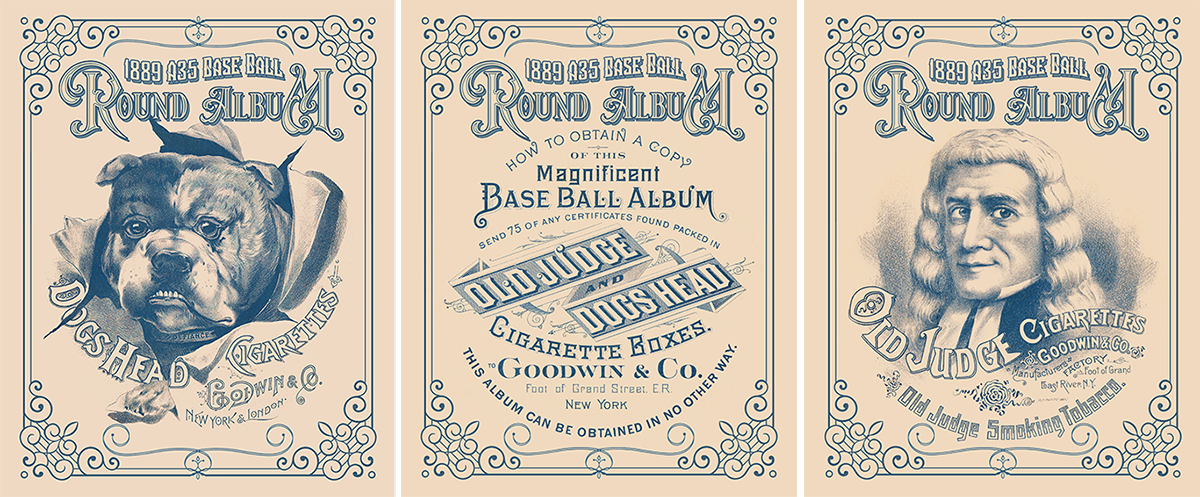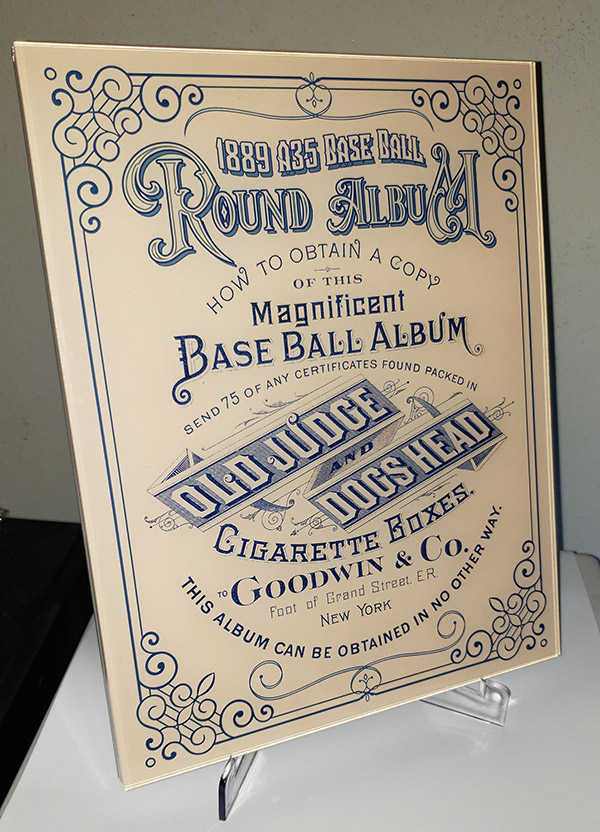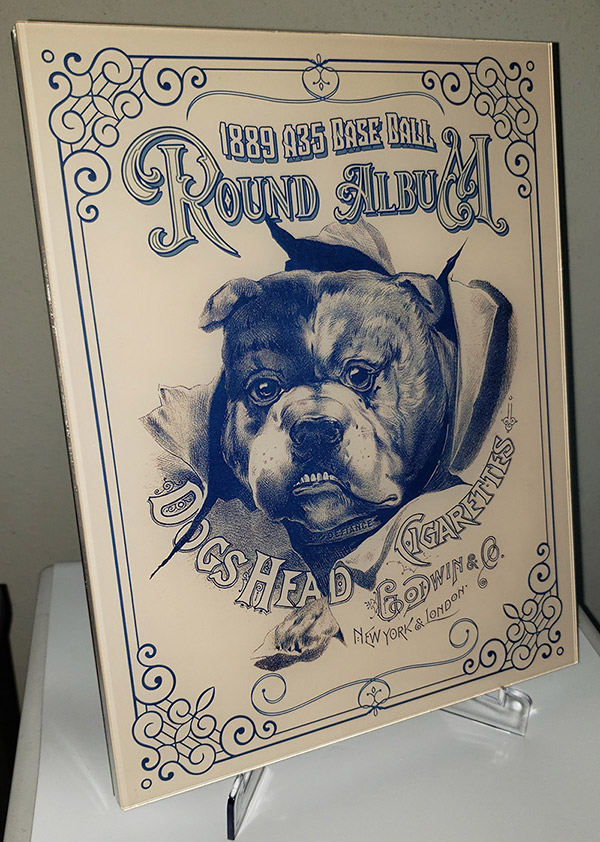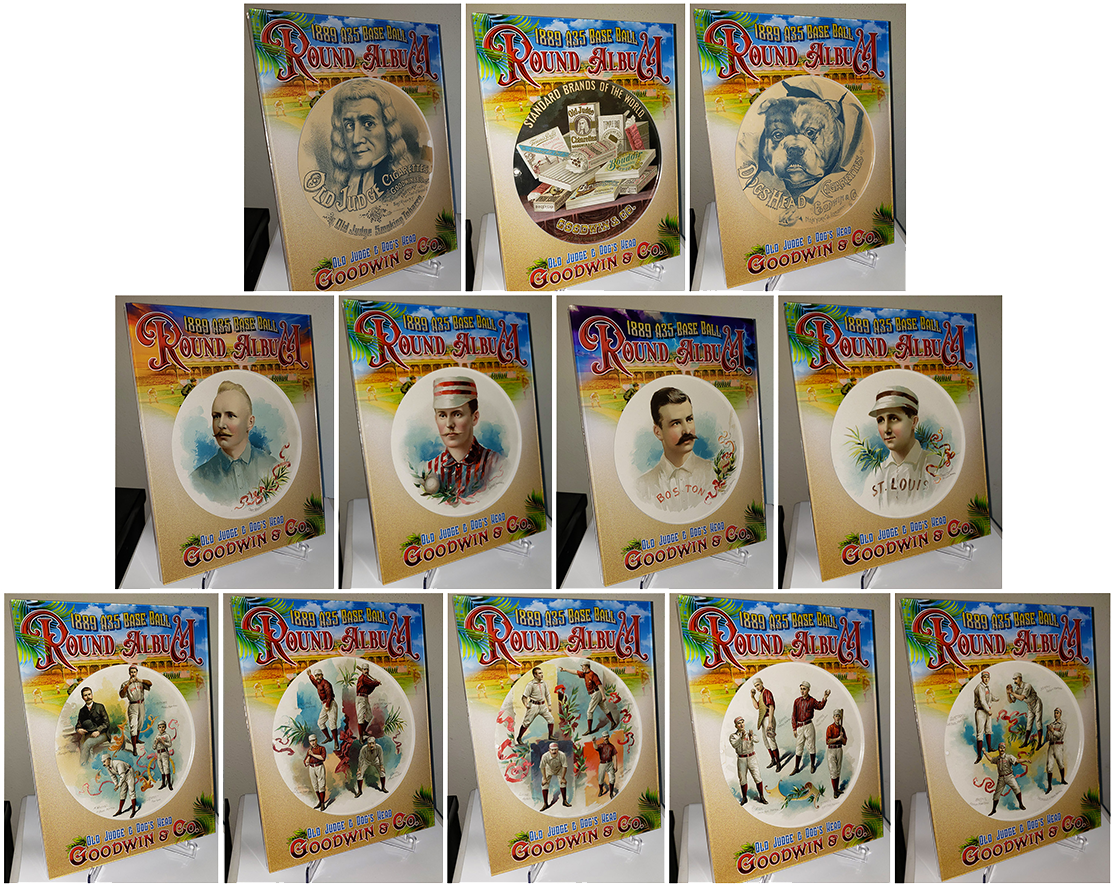- Thread starter
- #1
mouschi
Featured Contributor, Bridging the Gap, Senior Mem
- May 18, 2012
- 3,119
- 197
My 19th Century Quarantine Project!
First, I'll give it to you short and sweet. If you want to read the entire article, keep scrolling, but if you don't care about the labor pains and just want to see the baby, here you go!
I was alerted to an Iowa find that unearthed an 1889 Goodwin A35 Round Album - each Round has more in common with baseball cards than they do album pages. They are considered to be the most premium baseball issue to come out of the 19th century and had been lost to the hobby for about 130 years! Typically sold as singles, the A35 Rounds rarely make it to market. I have been looking to add some to my collection, because I *LOVE* 19th century color lithography. The Iowa find came to market and I WON THEM! Here is a pic:
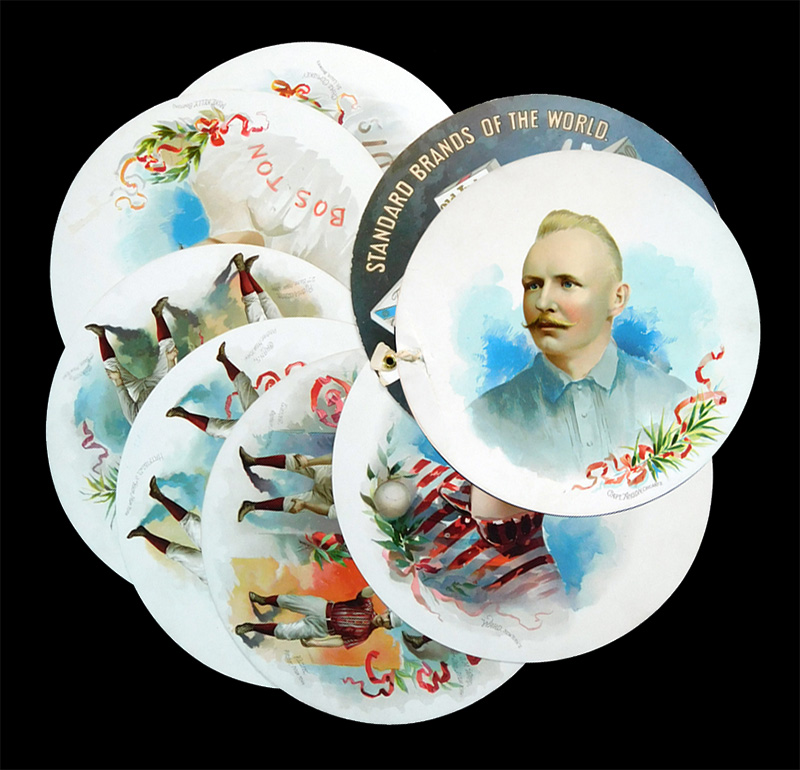
They are huge. Check out the sizing.
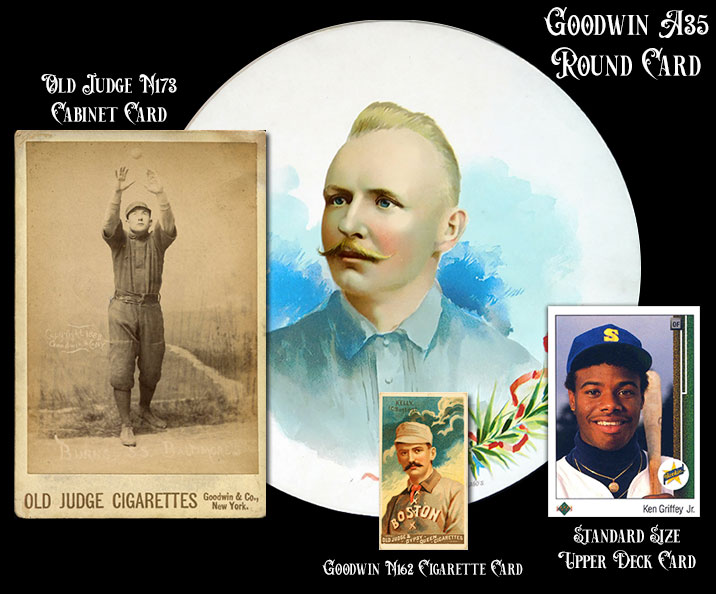
Simply putting each in holders wasn't doing them any favors aesthetically (this is just a cheap computer print out) ...
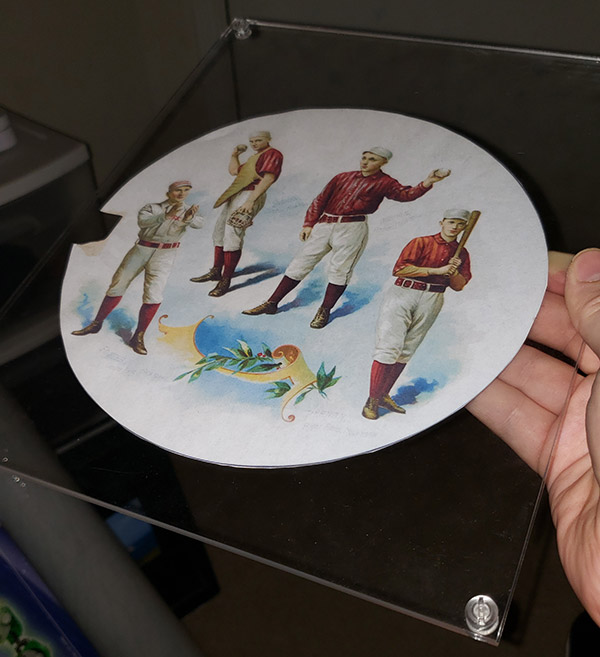
...so to standardize them, I spent the last few months inventing, designing, and constructing a new screwless holder with a slide out tray for each Round. Think: Allen & Ginter rat bone or tarantula ... but with 19th century lithography! Here are some examples of Topps doing it (though, Topps doesn't have pull out trays ... these are permanent):
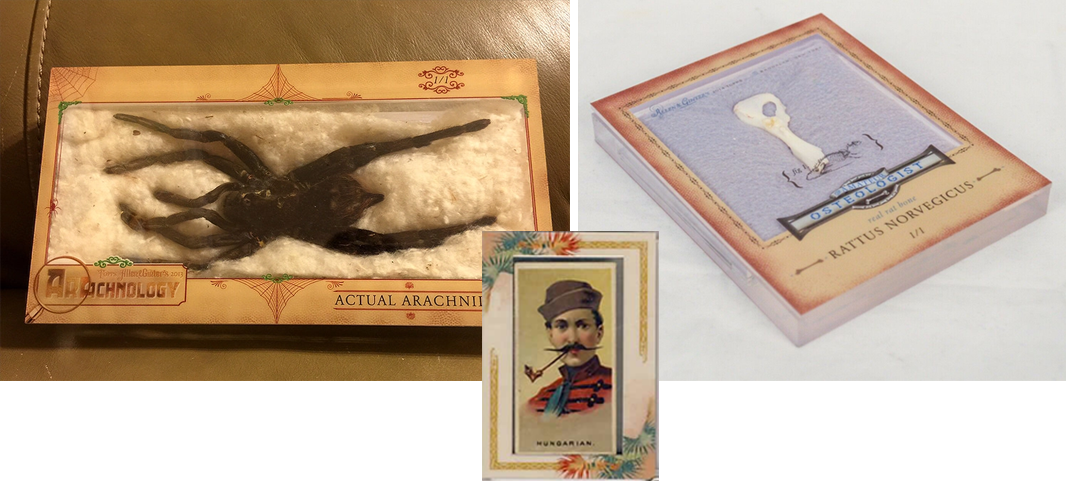
The artwork I designed was printed on the back side of acrylic, so it gives it a deep, rich, high end feel.
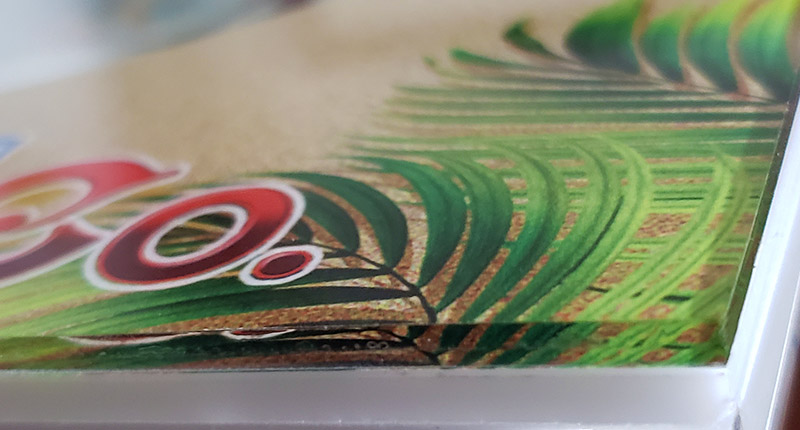
The top of the inserted tray that slides in has a lip, so it seals off the top flush with the edge. The best of both worlds - an entirely new collectible with an embedded 19th century art relic that isn't just a frame, but it also isn't permanent!
Here is one of the singles. Each piece is 5/8" thick!
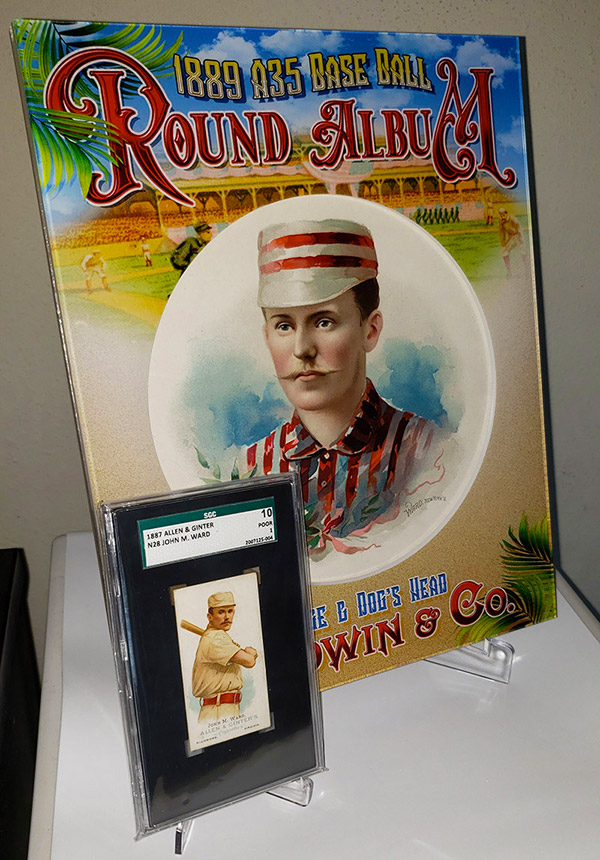
and the back. It is like a massive, jumbo Allen & Ginter back, but with the Old Judge mascot.
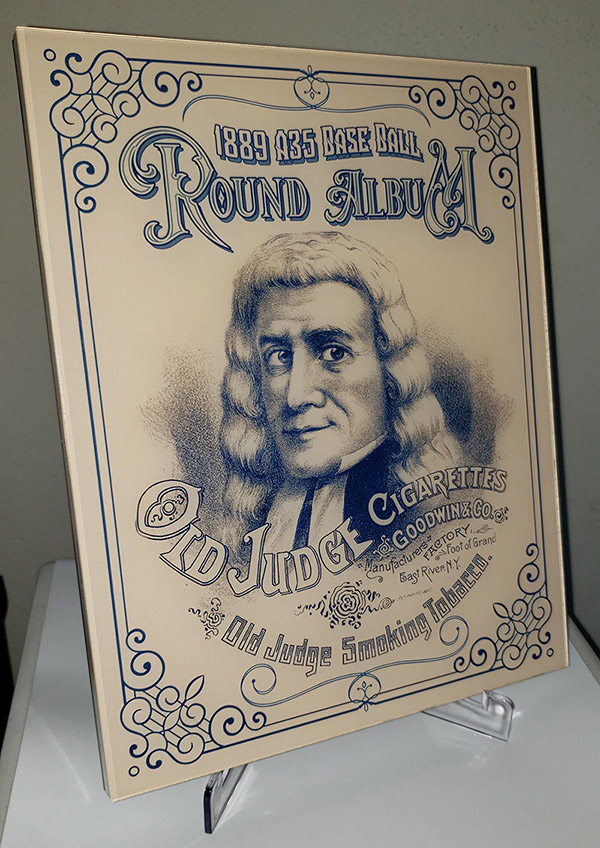
Here is another. The artist of the 1888 N162 Goodwin created a stormy background to match King Kelly's personality, so I did the same.
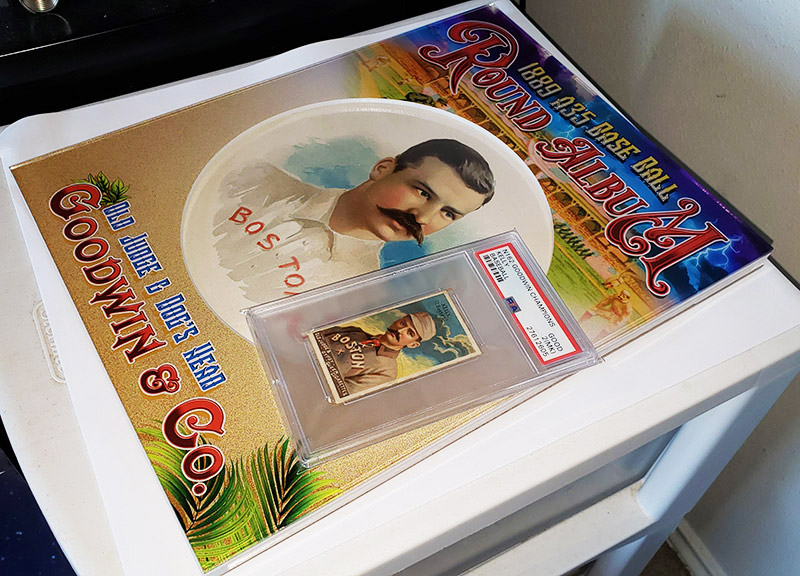
And now, for the full story ... lots more words and lots more pictures if you are interested ...
The Day Baseball Cards Died
Our beloved hobby began largely in the mid-late 1880's. Kids were *WILD* about baseball cards. Baseball card production ended (aside from a few sets) in January of 1890 when the ATC (American Tobacco Company) formed, removing any reason for cigarette companies to advertise. It wouldn't be until about 20 years later when the ATC was broken up and baseball cards were regularly produced again, ushering in cards like the T206 set.
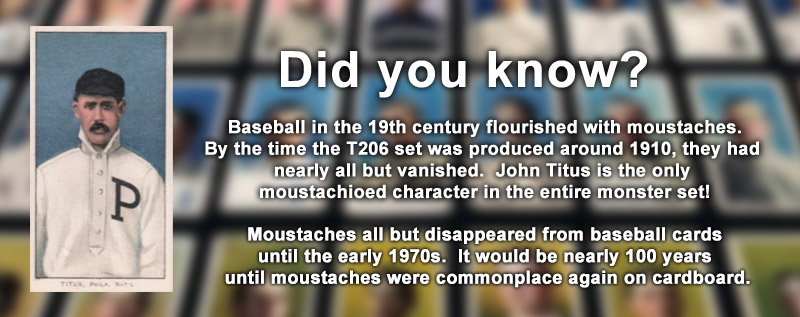
In a matter of months prior to the end of baseball cards in 1889, Goodwin offered up a buzzer beater with the 19th century's most premium baseball issue: The 1889 Goodwin A35 Round Album. It is as if the creators of 19th century baseball cards said "Let's go out with a bang and make something really special. Something that will blow everyone away." In spite of their beauty and rarity, it is quite possible that you may have never even heard of them before.
Introducing: the 1889 Goodwin A35 Round Album
The 1889 Goodwin A35 Round Album features a bound set of Rounds depicting either one or four players in beautifully detailed full color lithography, with stats on the back. In spite of the moniker, they have more in common with baseball cards than they do albums. Originally offered as a redemption for a whopping 75 coupons as opposed to their tiny cigarette card counterparts that came in each pack of cigarettes, it is no wonder why they are so rare and why many simply have never heard of these beauties before. Whenever they come up for auction, they are oftentimes sold as singles.
Each round is 8.25 inches in diameter, dwarfing cigarette cards, standard issue cards today and even the premium cabinet cards offered in the 19th century. The splash of color on a stark white background may remind you of Allen & Ginter cards.

When these were made, surely the creators had to pick each one up when finished to marvel at their beauty. True, pure, art worthy of framing. (You did read my article about how 19th century baseball cards were made, didn't you?)
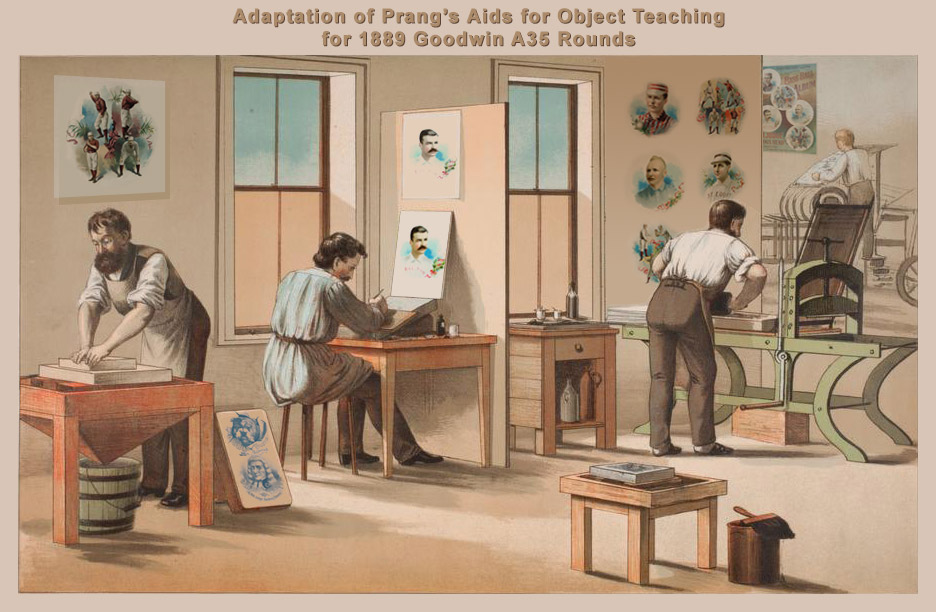
The level of detail on each is incredible. Looking up close, you can get a sense of the level of craftsmanship that went into each piece, and how much skill was needed from the hands of the artists and lithographers. It is no wonder why, in the 1930's, noted American printed ephemera collector Jefferson Burdick assigned a $10 value to it, making it one of the hobby's most valuable items at the time. This was when the T206 Honus Wagner was valued at an unheard of $50. It was highly sought after 50 or so years after its release, and to this day is still highly sought after, 130+ years later by those who know what they are.
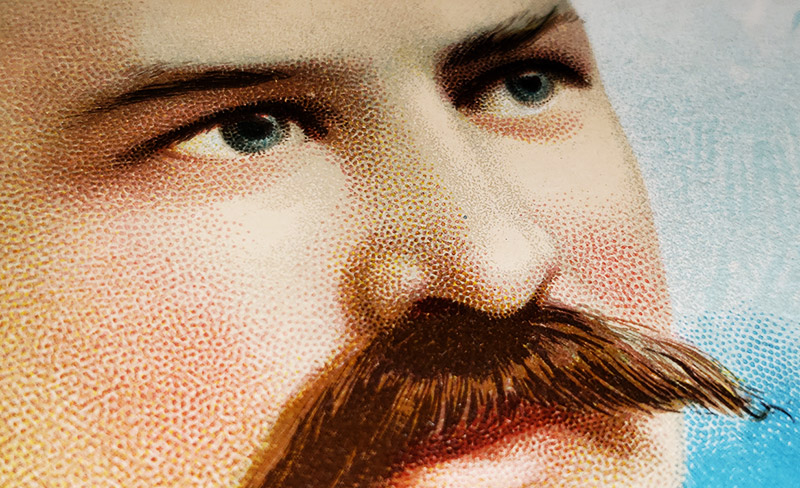
Ever since I learned of them, I have kept an eye out for examples this year to purchase - the last pieces that sold on eBay were a pair that are glued to paper. In spite of the rough shape, their magnificence still shows through - this piece sold for $275. (I was not the buyer, as it wasn't quite what I was looking for.) Though they were sold as the A35 Rounds, it appears as though they were actually cut from an advertisement poster.
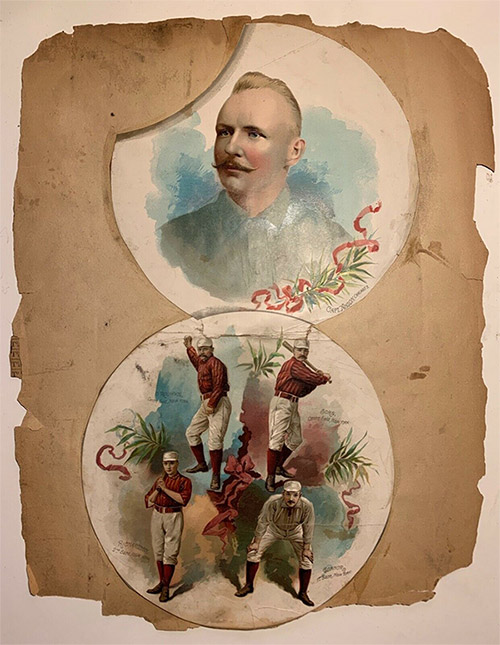
The Iowa Find
It is easy for me to get romantic about pre-war finds of baseball cards. One can daydream about searching an old bookstore, with books that haven't been touched in ages, where the previous owner tucked a tobacco card between the pages as a bookmark. Or perhaps finding an old, dilapidated house with all kinds of treasures in the attic.
Imagine opening a dusty chest to go through various artifacts that clearly had not been touched for a couple of lifetimes. The strong, musty smell of old newspaper and other paper relics instantly fill your nostrils. It is a chore carefully pulling everything out, and just before you give up, you see a full color portrait of a baseball player looking up at you - one that clearly looks like he predates Babe Ruth by decades - it is Cap Anson, and there are others bound to him as well!

I was alerted to a find in Iowa that unearthed an entire set of these. They were tucked away from the hobby for about 130 years! I'm not sure how they came about, but the set was sent to auction, and I watched closely. While several rounds had been torn near its binding hole, the lithography on each was crisp, bright and vibrant - just as they were when they came from the lithography studio in the 19th century. Many of these that come up for auction will show similar damage, as they were bound (quite literally) to be torn or bent from what bound them together. I decided to place a bid ... and won!
Creating Something Special
Featuring the World Champion New York Giants and loaded with prominent Hall of Famers, I wanted to do something special to display each one separately. They would look nice fanned out and framed like shown above, but it would be a crime to hide such beauties. Before they arrived, I went to work by creating paper prototypes and templates of holders, while printing out paper copies of the rounds to use as guinea pigs.
..... Continued on the next post ....
First, I'll give it to you short and sweet. If you want to read the entire article, keep scrolling, but if you don't care about the labor pains and just want to see the baby, here you go!
I was alerted to an Iowa find that unearthed an 1889 Goodwin A35 Round Album - each Round has more in common with baseball cards than they do album pages. They are considered to be the most premium baseball issue to come out of the 19th century and had been lost to the hobby for about 130 years! Typically sold as singles, the A35 Rounds rarely make it to market. I have been looking to add some to my collection, because I *LOVE* 19th century color lithography. The Iowa find came to market and I WON THEM! Here is a pic:

They are huge. Check out the sizing.

Simply putting each in holders wasn't doing them any favors aesthetically (this is just a cheap computer print out) ...

...so to standardize them, I spent the last few months inventing, designing, and constructing a new screwless holder with a slide out tray for each Round. Think: Allen & Ginter rat bone or tarantula ... but with 19th century lithography! Here are some examples of Topps doing it (though, Topps doesn't have pull out trays ... these are permanent):

The artwork I designed was printed on the back side of acrylic, so it gives it a deep, rich, high end feel.

The top of the inserted tray that slides in has a lip, so it seals off the top flush with the edge. The best of both worlds - an entirely new collectible with an embedded 19th century art relic that isn't just a frame, but it also isn't permanent!
Here is one of the singles. Each piece is 5/8" thick!

and the back. It is like a massive, jumbo Allen & Ginter back, but with the Old Judge mascot.

Here is another. The artist of the 1888 N162 Goodwin created a stormy background to match King Kelly's personality, so I did the same.

And now, for the full story ... lots more words and lots more pictures if you are interested ...
The Day Baseball Cards Died
Our beloved hobby began largely in the mid-late 1880's. Kids were *WILD* about baseball cards. Baseball card production ended (aside from a few sets) in January of 1890 when the ATC (American Tobacco Company) formed, removing any reason for cigarette companies to advertise. It wouldn't be until about 20 years later when the ATC was broken up and baseball cards were regularly produced again, ushering in cards like the T206 set.

In a matter of months prior to the end of baseball cards in 1889, Goodwin offered up a buzzer beater with the 19th century's most premium baseball issue: The 1889 Goodwin A35 Round Album. It is as if the creators of 19th century baseball cards said "Let's go out with a bang and make something really special. Something that will blow everyone away." In spite of their beauty and rarity, it is quite possible that you may have never even heard of them before.
Introducing: the 1889 Goodwin A35 Round Album
The 1889 Goodwin A35 Round Album features a bound set of Rounds depicting either one or four players in beautifully detailed full color lithography, with stats on the back. In spite of the moniker, they have more in common with baseball cards than they do albums. Originally offered as a redemption for a whopping 75 coupons as opposed to their tiny cigarette card counterparts that came in each pack of cigarettes, it is no wonder why they are so rare and why many simply have never heard of these beauties before. Whenever they come up for auction, they are oftentimes sold as singles.
Each round is 8.25 inches in diameter, dwarfing cigarette cards, standard issue cards today and even the premium cabinet cards offered in the 19th century. The splash of color on a stark white background may remind you of Allen & Ginter cards.

When these were made, surely the creators had to pick each one up when finished to marvel at their beauty. True, pure, art worthy of framing. (You did read my article about how 19th century baseball cards were made, didn't you?)

The level of detail on each is incredible. Looking up close, you can get a sense of the level of craftsmanship that went into each piece, and how much skill was needed from the hands of the artists and lithographers. It is no wonder why, in the 1930's, noted American printed ephemera collector Jefferson Burdick assigned a $10 value to it, making it one of the hobby's most valuable items at the time. This was when the T206 Honus Wagner was valued at an unheard of $50. It was highly sought after 50 or so years after its release, and to this day is still highly sought after, 130+ years later by those who know what they are.

Ever since I learned of them, I have kept an eye out for examples this year to purchase - the last pieces that sold on eBay were a pair that are glued to paper. In spite of the rough shape, their magnificence still shows through - this piece sold for $275. (I was not the buyer, as it wasn't quite what I was looking for.) Though they were sold as the A35 Rounds, it appears as though they were actually cut from an advertisement poster.

The Iowa Find
It is easy for me to get romantic about pre-war finds of baseball cards. One can daydream about searching an old bookstore, with books that haven't been touched in ages, where the previous owner tucked a tobacco card between the pages as a bookmark. Or perhaps finding an old, dilapidated house with all kinds of treasures in the attic.
Imagine opening a dusty chest to go through various artifacts that clearly had not been touched for a couple of lifetimes. The strong, musty smell of old newspaper and other paper relics instantly fill your nostrils. It is a chore carefully pulling everything out, and just before you give up, you see a full color portrait of a baseball player looking up at you - one that clearly looks like he predates Babe Ruth by decades - it is Cap Anson, and there are others bound to him as well!

I was alerted to a find in Iowa that unearthed an entire set of these. They were tucked away from the hobby for about 130 years! I'm not sure how they came about, but the set was sent to auction, and I watched closely. While several rounds had been torn near its binding hole, the lithography on each was crisp, bright and vibrant - just as they were when they came from the lithography studio in the 19th century. Many of these that come up for auction will show similar damage, as they were bound (quite literally) to be torn or bent from what bound them together. I decided to place a bid ... and won!
Creating Something Special
Featuring the World Champion New York Giants and loaded with prominent Hall of Famers, I wanted to do something special to display each one separately. They would look nice fanned out and framed like shown above, but it would be a crime to hide such beauties. Before they arrived, I went to work by creating paper prototypes and templates of holders, while printing out paper copies of the rounds to use as guinea pigs.
..... Continued on the next post ....

